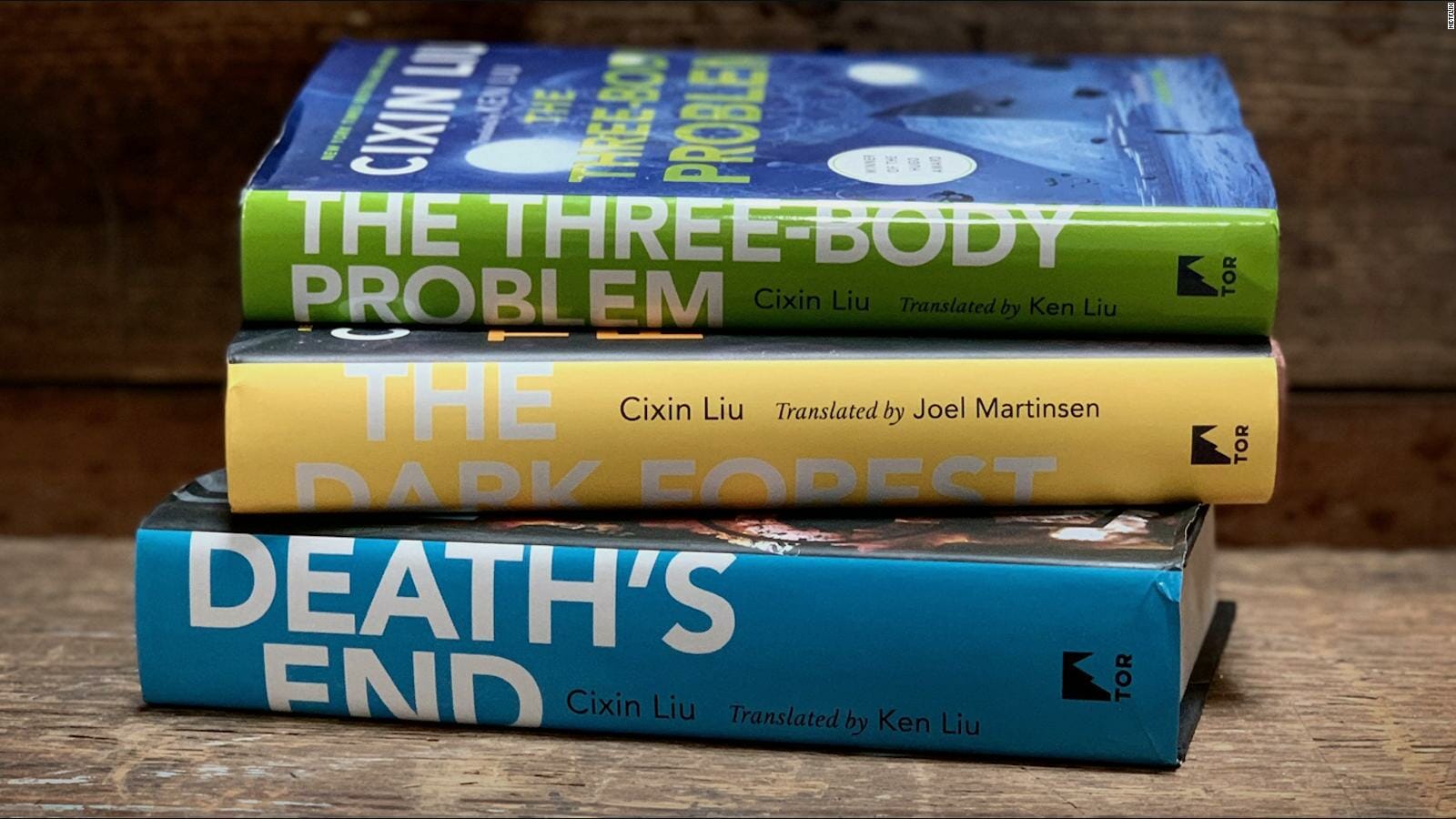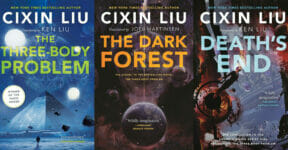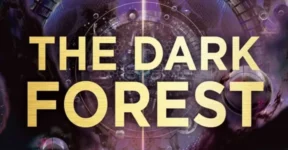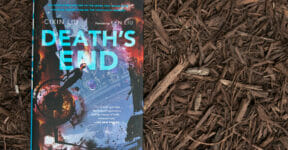Remembrance of the Earth’s Past trilogy by Chinese writer Liu Cixin offers a captivating take on an encounter with extraterrestrial life and its predictable lethal consequences. Planet Earth is fortunate enough to have relatively stable weather and an abundant of natural resources, but it has become a prized target for occupation by alien civilizations. Humans’ relentless attempts to establish communication with intelligent existence from other worlds come with the inherent risk of inviting large-scale invasion. Check out everything you need to know about the Three-Body Problem series now!
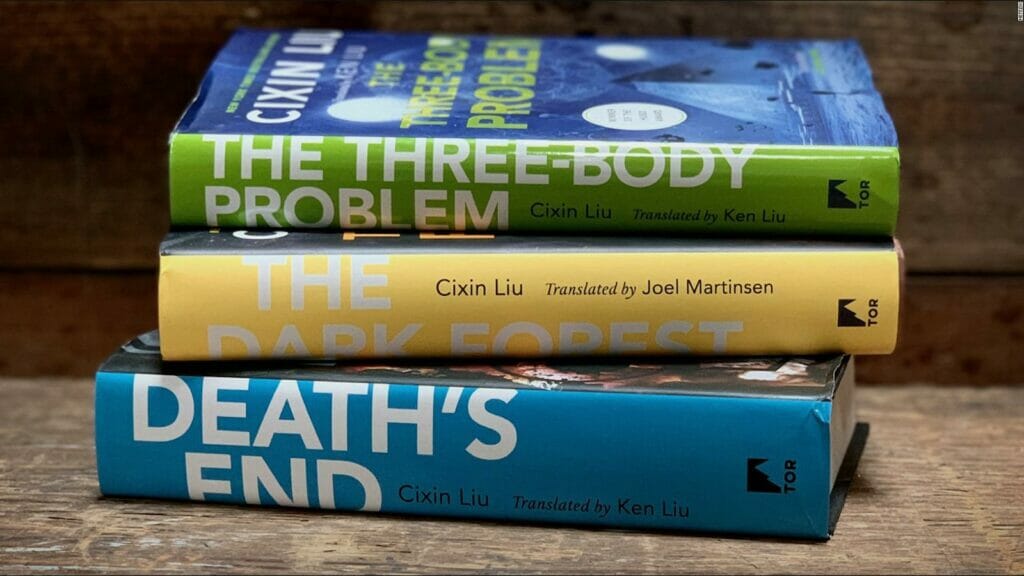
The series consists of three books: The Three-Body Problem, The Dark Forest, and Death’s End. More popularly known as “the three body problem trilogy” – referring to the title of its first volume – the series falls into the hard sci-fi category, in which science reigns over fiction as a storytelling device. Despite the author giving heavy emphasis on the scientific base and processes of all the technologies and interstellar travels mentioned, the series never fails to tap into the philosophical issues pertaining to the nature of human society. In fact, just about every scene in the novel will challenge your thinking to the very core.
The Three-Body Problem
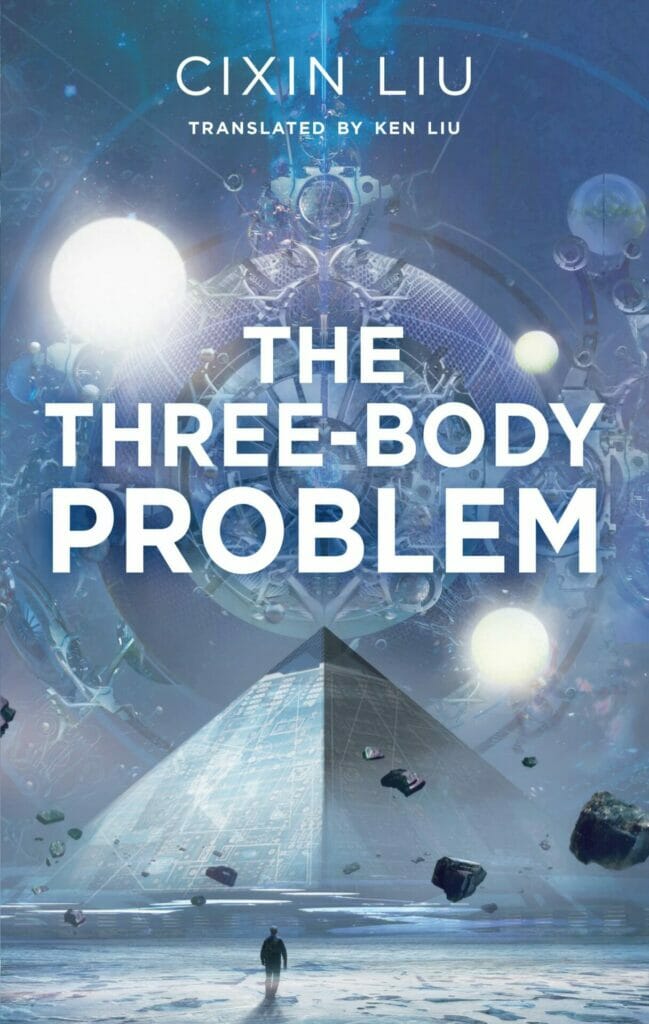
It all starts during the Cultural Revolution, where an astrophysicist finds herself on the opposite end of the Chinese government ideas of the ideal society. She is branded a traitor and subsequently sent to a labor brigade. After another run-in with the authority, the astrophysicist eventually ends up in prison. The real story begins when two military physicists recruit her to work on weaponizing radio wave technology to destroy satellites. It doesn’t take long until she realizes the project’s true intention is to discover extraterrestrial life by broadcasting Earth’s location throughout the universe.
All sorts of existential threats come to surface when an alien race from Planet Trisolaris responds to the broadcast message. The Trisolarans are advanced civilizations whose technologies are superior to ours. However, life on the planet has become unbearably difficult and the Trisolarans know Earth will make for an excellent second home. As it turns out, there are indeed plenty of other intelligent civilizations across the universe; the only reason humans have never heard or seen any verifiable evidence of them is the “fear of the unknown.” Humans are the only species brave (or stupid) enough to reveal their planet’s location.
While the conflict between Earth and Trisolaris is the main focus, it doesn’t simply turn into the typical war story between two opposing sides. Liu Cixin demonstrates a grand scale of understanding of particle physics, rocket science, cutting-edge computer technology, and molecular biology in his story. Any keen reader can say that The Three-Body Problem is born from an immense quantity of scientific research into an undisputed class of hard sci-fi.
For example, the title is a reference to an esoteric problem in relation to predicting the motions of three objects with intersecting gravitational fields. There is no simple closed-form solution as a result of the chaotic dynamics. It is relevant to the story because Trisolaris has three suns, which trigger life-threatening climate change havoc. The longstanding three body problem of Trisolaris is the reason why the Trisolarans are ecstatic to find Earth. Fortunately, the distance between the two planets is far enough that it gives Earth 400 years before the invasion arrives.
The Dark Forest
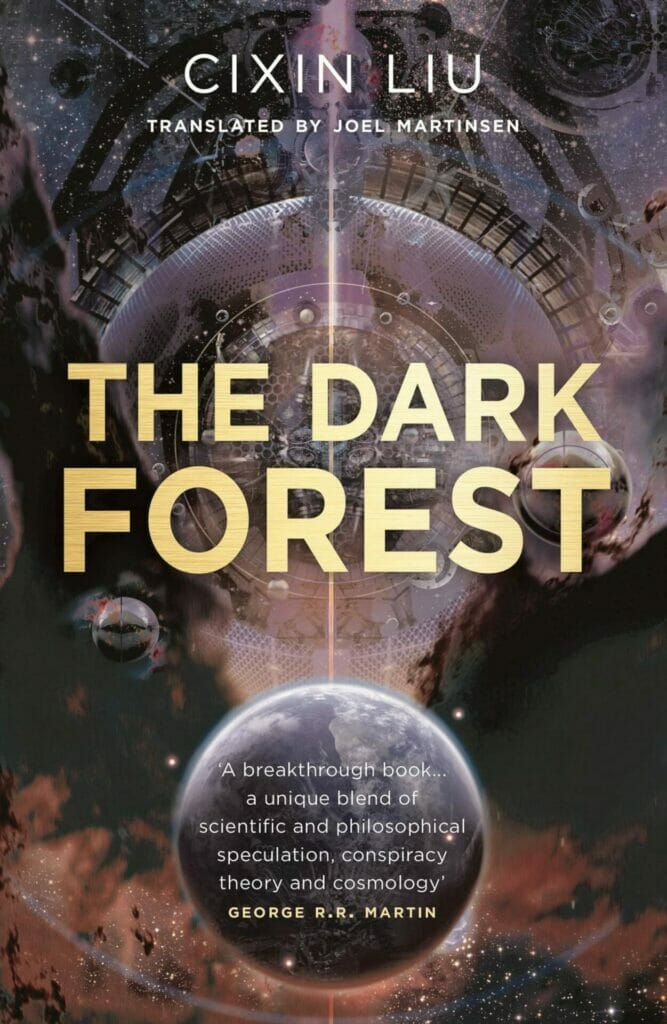
A sociologist takes the center stage in the second volume, The Dark Forest. Human civilization on Earth is divided into multiple factions upon news of the impending invasion; one of them actually takes sides with Trisolarans. Humans send a fleet of its most advanced spaceships to intercept the invasion. Most are reduced to ruins, and a few survive but choose to float in space rather than return to Earth. They want to establish space-based cities away from the solar system.
Following a complex work intelligence and multiple layers of counterintelligence, the sociologist theorizes that the universe is like a dark forest where predators lurk in every direction and will destroy any planet that reveals its location. Based on the theory, he concludes the Trisolaris is as vulnerable to those predators as Earth. His plan is to broadcast Trisolaris’ coordinates as a retaliatory threat. The plan works as expected.
Death’s End

Safety is restored. The sociologist is now in charge of the device that can transmit the Trisolaris location everywhere across the universe. Life on Earth is good, but might be too good for their own safety. The prosperous era leads to a great number of feminized men with long hair, make-up, slender figures, who are grossly inadequate for hardships. Meanwhile, away from Earth’s atmosphere, the spaceships that refuse to return have apparently engaged in their own wars for supplies. One of the remaining ships, called the Bronze Age, finally makes a descent to Earth. The crew are coming home under the impression they will be welcomed as heroes, but they are instead charged with crimes against humanity.
The same thing happens to our sociologist, who is charged with genocide during his retirement days. He is required to prove his Dark Forest theory by broadcasting the location of another planet, and is subsequently destroyed. To replace him as the keeper of the transmitter is an aeronautical engineer named Cheng. The Trisolarans are aware of the replacements and make the correct guess that a female guard doesn’t have what it takes to press the button. They invade the Earth.
Approaching the end of the novel, all of humanity is forced to migrate to Australia and Mars where they will be starved to death and forced to engage in cannibalism. The other ships that are still in space, Blue Space and Gravity, make peace after facing two common attackers, and send the broadcast signal then escape. The Trisolarans abandon their invasion and slowly humanity recovers. One of Trisolaris’ suns is attacked and the planet is incinerated.
When the conflict finally comes to a rest, humans no longer see the Earth as a safe home. The Trisolarans are not exactly depicted as evil aliens; they only want to survive. Remembrance of Earth’s Past turns out to be one of the most ambitious sci-fi novel series ever written. The story starts in the Cultural Revolution and ends 19 million years into the future. The Three-Body Problem and The Dark Forest are vast, but each is pale in comparison with Death’s End. The plot expands for centuries, filled with personal philosophical conflicts woven into galaxy-scale struggles for survival.
We found this series engaging and educational. Some of us kept a phone or another Internet device handy so we could google some of the more complicated scientific topics covered in these books. Liu Cixin flat out knows his science, and his explanations of numerous state-of-the-art scientific processes would make a physics professor proud. We really liked this book series! If you like hard sci-fi, you’re going to love them too.
Have you read The Three-Body Problem yet? Have you finished the series? Let us know. We’d love to hear from you.
Other things you might want to know.
What is the Cultural Revolution in China?
According to history.com the revolution began in 1966 by communist leader Mao Zedong. He wanted to have authority over the Chinese government as he felt these leaders were taking the party and its people in the wrong direction. Mao called on the youth of the nation to rid the ‘impure’ elements of Chinese society.
What happened to the country during the Cultural Revolution?
According to history.com Mao shut down the country’s schools, called for the youth to take current leaders to task for the way they had governed. The students formed the Red Guard and in the following months attacked and harassed members of China’s elderly and intellectual population. There became different factions of the Red Guard and they battled for dominance. Many former leaders were imprisoned and beaten. Trying to restore the chaos from the Red Guards, the economy of China severely dropped. Former leader Lin, who had been imprisoned, tried a power grab against Mao. In 1971 Lin died in a plane crash. Zhou Enlai began to take greater control after aligning with Mao against Lin.
How did the Revolution end?
According to history.com Zhou started to stabilize China. He revived the educational system and brought a number of former leaders back to power. In 1972 Mao had a stroke and Zhou learned he had cancer. The two supported Deng Xiaoping. In 1976 (after Zhou and Mao died), Deng regained power and would remain so for the next 20 years.
During the Cultural Revolution nearly 1.5 million people were killed and millions of other suffered imprisonment, seizure of property, and torture. Many Chinese people lost faith in their government.
Go to history.com to read more about the Cultural Revolution of China.

